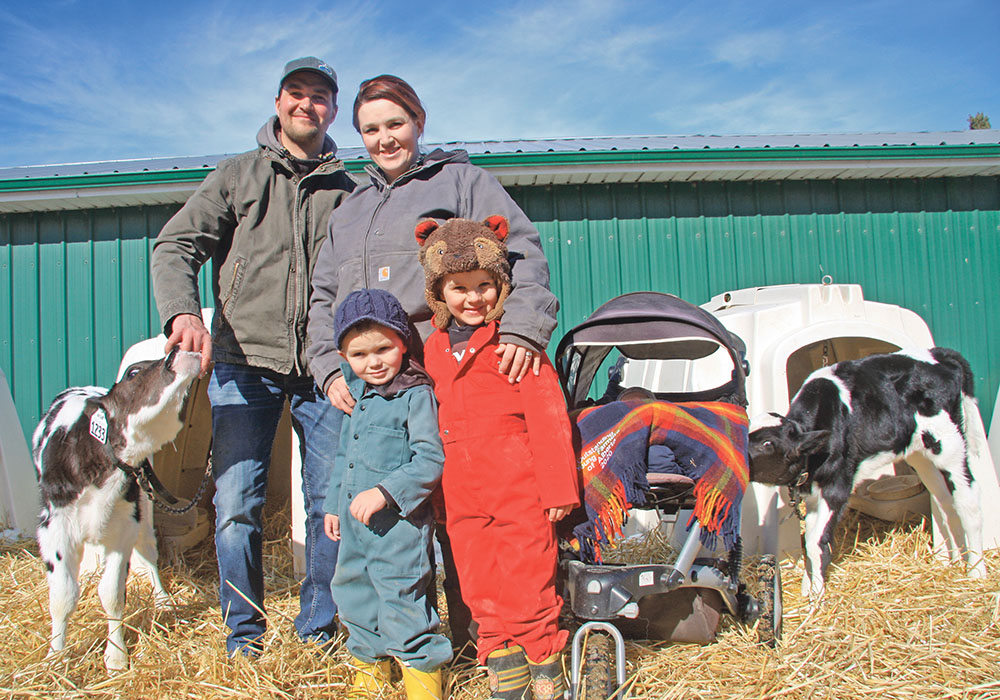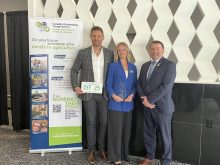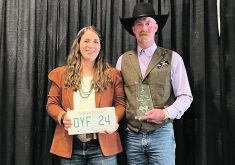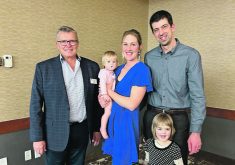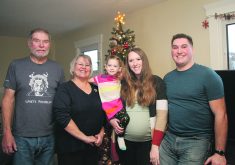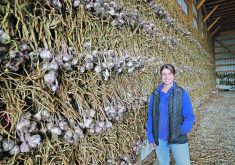On the Farm: Producers say the national program provided them with an opportunity to take a fresh look at their operation
SPRUCE VIEW, Alta. — Farming at Benthemmer Holsteins is all about continuous improvement.
Every year Roelof and Mary van Benthem make improvements to their dairy at Spruce View in central Alberta to make life better for their cows and ultimately for themselves.
Named Alberta’s outstanding young farmers for 2020, they and their four boys — Lars, 8, Noah, 6, Finn, 3 and Toby, four months — are busy on the farm but also make time for community activities such as hockey, soccer and involvement with the Holstein breed. Roelof is president of the Southern Alberta Holstein Association, and the family has been recognized as breeder of the year three times in a row.
Read Also

Nutritious pork packed with vitamins, essential minerals
Recipes for pork
As the newest members of the outstanding young farmer program, they are already seeing benefits. The program made them sit back and assess their own operation.
“You are so busy doing you don’t sit back and have an overview. It was a good opportunity to look at yourself,” Mary said.
They were able to think over their goals and values as well as meet other people from other types of farms to see how they do things and what they have in common.
“This program made us do that,” Roelof said.
He came to Canada from the Netherlands in 2000 with his family when he was 16. He met Mary at the Spruce View School but they did not get together until they were adults.
His parents, Evert and Jannetta, encouraged him and his two brothers to get off the farm and experience other things. Roelof knew he wanted to farm but he also studied kinesiology, practised speed skating and later attended Olds College in Olds, Alta., where he took agriculture production and management. He later travelled to the Netherlands and worked with a veterinarian to learn embryo transplantation, artificial insemination and pregnancy checks.
Mary grew up at Spruce View on a farm, although her family stopped farming some years ago. She eventually worked in financial services in Red Deer and now does the farm paperwork and accounts. Their boys are also heavily involved in minor hockey and soccer, which keeps her busy.
She and Roelof also coach minor sports. He is a speed skater and got his boys up on skates as soon as they were ready but instead they have turned into enthusiastic hockey players.
The farm has grown slowly over time and they are partners with Roelof’s parents, who split their time between Benthemmer Holsteins and his brother Merein and his wife Kelsey’s September Holsteins operation.
In the Netherlands, the family ran a 40-cow dairy and made cheese. They wanted to expand but there was no room to grow so they decided to emigrate.
The farm at Spruce View was selected partly because of its clear view of the Rocky Mountains. The climate is manageable with adequate rain.
Roelof and Mary’s operation consists of 840 acres with about 120 cows and 150 young stock of registered Holsteins. They grow their own feed, which includes barley and silage crops. They have their own roller mill to make their own feed and only have to buy supplements.
Next season they may add canola, but Roelof admits he prefers working with the cows.
Roelof and Mary have established their own quality milk handbook for the farm and developed a code of practice book for the proper care and handling of dairy cattle.
A major shift was the switch to milking robots 15 months ago. It took about three months to train the cows and themselves to use the new system. They estimate that five to 10 percent of the cows have to be sent to the robot, but the rest caught on, and the resulting data tells them the cows are already more productive with increased milking times. The average milking is 2.8 times, but Roelof hopes to increase that to three times a day.
Milking used to be a two-person job and now with the robots there is time for other farm work. The new technology has also reduced the need to hire staff.
“The hours are not easy and every time you have to hire somebody new it is retraining and you have to be able to trust them,” said Mary.
They have also changed their breeding plans.
They use sexed semen to get more females but are also breeding some cows to Angus bulls to get more marketable crossbreds for the beef sector. They also flush some of the top cows and transplant embryos to other cows on the farm.
The calves are housed in hutches, but the little shelters have been arranged so they see each other and can leave their space and socialize in small groups.
Another innovation is rebuilding barns.
“Our plans are most focused on the barns and making things better,” Roelof said.
Added Mary: “Every year you are always trying to do something.”
The old milking parlour was renovated into a calf barn, and the cows’ space has been changed to make stalls bigger to accommodate larger animals.
The latest experiment is adding water beds to the stalls.
They started with six mattresses placed on rubber mats and covered with deep bedding. The cows were hesitant to try them at first, but they soon discovered the beds were more comfortable and now compete for a space. The entire barn will be changed over to water beds.
The national outstanding young farmers competition will be held in Saskatoon in December.




